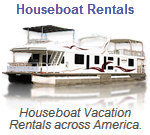Though most people think of Everglades National Park when they hear talk of the Everglades, the park itself encompasses only a fraction of southern Florida’s expansive "River of Grass”. Broadly speaking, the Everglades, which range from swamp to hardwood hammocks, open fields to lush waterways and mangrove islets, takes in an area that starts in the northeast near Palm Beach, curves down and west below Lake Okeechobee and reaches nearly to the outskirts of Naples on the Gulf Coast. Florida Bay, at the southern end of the state, brings the Everglades, and Everglades National Park (which occupies only the southwestern section of this region) to a natural finish, though this stretch of water itself is also associated with the national park and runs east towards the northern tip of the Florida Keys (in turn part of the Florida Keys National Marine Sanctuary), John Pennekamp Coral Reef Park and Biscayne National Park.
Overview
Edged to the northeast by urban sprawl, to the north by Highway 41, to the northwest by the southern end of the Ten Thousand Islands and to the south by Florida Bay, Everglades National Park has the distinction of standing as the largest subtropical wilderness in the country, and as such is designated a Wetland of International Importance, as well as a World Heritage site. Covering 1.5 million acres, this national park is laced with meandering waterways fed by the Shark River’s freshwater slough, as well as local lakes and rainfall, which during wet season (May to November) flood large sections of the park. The park is at its busiest (due to weather and insect conditions) during the drier months, roughly December to April, when humidity levels drop, mosquitos disappear and wildlife is easier to spot.
If you’re pondering how best to explore this park keep some things in mind. Though there are several short boardwalk trails off the main park road and a trail or two around Flamingo Visitor Center, the best way to really see the wild side of the Everglades is by boat. Experienced paddlers can tackle long-distance water trails in the west, though those less comfortable in a canoe might want to consider instead a short guided paddle or boat-based eco tour. Camping is the only overnight accomodation on offer in the park, some of it primitive, some of it les so but pack accordingly, and be sure to make reservations in advance. Importantly, always remember to pack along some bug spray and a pair of binoculars.
Big Cypress National Preserve
Named not for the size of its trees but its overall expanse, Big Cypress National Preserve sprawls across an area due north of the national park, a subtropical place home to wet prairies and hardwoods, mangrove forests, pine and large numbers of the cypress for which the preserve is named. Since vast portions of Big Cypress are swampy, the best way to penetrate beyond the Everglades Parkway (Alligator Alley) and Highway 41, which cuts through the southern side of the preserve, is by swamp buggie or air boat, though hikers can enjoy a quieter approach tackling the southern section of the Florida Trail, which runs roughly north through the center of the preserve.
Entrances
There are three points of entry into the park. At its northwestern border, Everglades City offers a selection of tourist amenities as well as access to the national park through the Gulf Coast Visitor Center and Chokoloskee, an island which serves as a springboard for local boating activity. Situated at the edge of the Ten Thousand Islands, tiny uninhabited islets which can only be reached by boat (some support primitive camping), the Gulf Coast entrance is particularly popular with paddlers hoping to glide along local canoe trails or the Wilderness Waterway (99 miles), which ultimately runs all the way down to Florida Bay and the Flamingo entrance on the southern coast and is open both to canoers and small motorized boats.
Flamingo Visitor Center isn’t an entry point, rather the end of the road for the park’s sole interior road, a stone’s throw from a boat launch, marina and basic tourist amenities but also close to hiking routes like the Coastal Prairie Trail. A long list of islets offshore make for boating, good saltwater fishing and sunny sailing (and sometimes snorkeling). Linking Flamingo to the developed eastern coast is a road that runs to the park headquarters and the Ernest F. Coe Visitor Center, close to Biscayne National Park, John Pennekamp Coral Reef State Pakr and the northern end of the Florida Keys. This is the main park entrance, and a number of research and educational facilities are located just inside park boundaries.
Due west of Miami along scenic Highway 41(the Tamiami Trail), is the Shark Valley entrance and Visitor Center. In addition to a tram, which runs tours into Shark River Slough and to an observation tower, there is are also short nature trail to tackle before continuing on west into Big Cypress National Preserve or detouring out to visit the nearby Miccosukee Indian Village, which offers visitors a glimpse of traditional Native Amerian life in the region.
Some Other Things To Know
Pets
Currently pets are permitted in the following areas:
- On roadways open to public vehicular traffic
- In roadside campgrounds and picnic areas
- On the maintained grounds surrounding public facilities and residential areas
- Aboard boats.
*All pets must be on a leash not to exceed six feet and under close supervision, even in designated areas.









